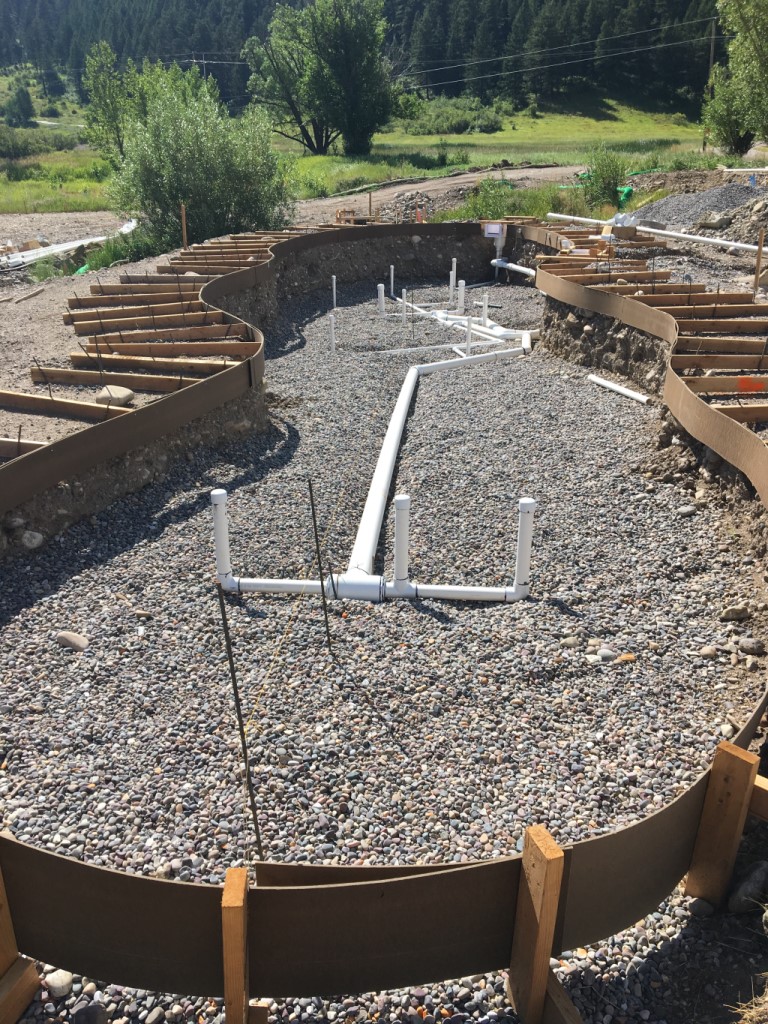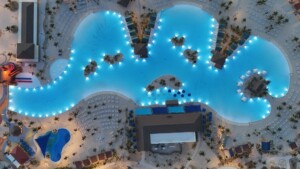Cloward H2O, an expert in aquatic design, has shared its insights into three different types of pool structures; concrete, stainless steel, and fibreglass.
Rob Cloward, associate principal and senior engineer at Cloward H2O, discusses the pros and cons of each of these materials and considers their suitability for various applications.
Concrete pools
The most commonly used type of swimming pool construction is the cast-in-place, or poured-in-place, concrete pool. This approach is well-established and has been used to build innumerable pools, many of which have been operating for decades. They are hardwearing, can be made to almost any size and shape, and offer a high-quality finish.
Cloward explains: “Properly designed, reinforced, and constructed concrete pools are resistant to cracking. Commercial concrete pool structures should follow a minimum standard ACI 350 (American Concrete Institute) for watertight concrete, which provides guidance on concrete thickness, steel reinforcing requirements, and concrete mix specifications.”
The concrete is usually sprayed onto the structure as shotcrete. This means that nearly any size or shape can be created.
“Because the concrete is sprayed, the floor and walls can be constructed as a single monolithic structure,” says Cloward. “The shotcrete application method can even be used to apply concrete to high walls or ceilings. Due to the nature of shotcrete application, concrete pools will have a solid and void-free interface to the surrounding soil and other structures, adapting to in-situ site conditions.”
Concrete pools are durable and suitable for a variety of surface finishes. These range from tile or plaster to quartz aggregate or smooth pebble. Quartz aggregate and smooth pebble finishes have become available more recently. These finishes are more durable and last around twice as long as conventional pool plaster.
Furthermore, Cloward H2O says that cast-in-place concrete pools are less expensive than other pool structures. Concrete is readily accessible in most areas, minimising the impact of transportation. Skilled concrete pool installers are also available in all territories, and so labour costs are lower.
Stainless steel pools
Stainless steel pool structures provide a high-quality feel and are lighter than standard concrete pools. This means that they are suitable for installation on top of buildings like high-rise buildings or parking garages. In addition, stainless steel pools are sturdy and corrosion-resistant, and some are supplied with excellent warranties.
Stainless steel pools must be installed on a poured concrete foundation or another structure. Installation of the pool onto the prepared base is fast. Smaller pools can be delivered in a single piece, whereas bigger pools must be transported in numerous pieces and welded or assembled on-site.
Cloward says: “Shipping logistics limit the size and layout of smaller pools. Pools that fit in a shipping container or on a flat truck are easier and cheaper to ship than those needing to be shipped in pieces or as oversized loads. Stainless steel pools can be made into various shapes, but more complex shapes require more forming effort and can increase the price.”
Clients also need to consider if salt chlorine generation will be used:
“Stainless steel material is resistant to corrosion but not rustproof. Salt chlorine generation is not recommended for stainless steel pools, and many manufacturers will not honor the warranty if salt chlorine generators are used.”
Stainless steel pools can be finished with bare stainless steel, a vinyl liner, or small tiles. Larger tiles are not advised due to flexibility and thermal expansion in the pool material, which can cause tile failure.
“Stainless steel pools are typically more expensive than concrete pools, especially for on-grade applications. However, in applications where the pool is built on a structure, stainless steel can provide significant cost savings due to its lighter weight and reduced structural reinforcement needs,” adds Cloward.
Fibreglass pools
Fibreglass pools have similar advantages to stainless steel pools, such as being lightweight and easy to install. However, they are more affordable than stainless steel pools and have good chemical resistance.
“Fiberglass pools are built around a mold, limiting their geometry to the molds available at the manufacturer’s facility,” explains Cloward. “If a specific geometry is desired, a new mold must be made, though multiple identical pools can be fabricated from a single mold.”
A fibreglass pool’s finish options are restricted to gelcoat or small tile. Larger tiles are not advised due to the structure’s flexibility and heat expansion, which might cause failure. Gelcoat finishes are prone to spider-web cracking, fading, and chipping, and spot repairs often do not blend well with the surrounding surface.
Cloward adds: “Fiberglass has a history of delamination as the structure ages. While resins and technology have improved, life testing of these updates still creates uncertainty.
“Similar to stainless steel pools, fiberglass pools require a well-prepared foundation. Improper installation can lead to wall and floor deflection, cracking, and structural failure. Pools with sufficient wall thickness should be considered to maintain deflection and strength within suitable ranges.”
The size of fibreglass pools can be limited by shipping constraints, as they are often delivered as a single, watertight structure. This type of structure can be inexpensive, however, if a custom shape is desired then a mould needs to be made, which increases the overall cost.
Choosing the best structure
“Cast-in-place concrete pools are typically the best option for on-grade pools due to their high quality, durability, cost-effectiveness, and design flexibility,” concludes Cloward.
“Stainless steel pools are excellent for pools located on structures, providing a high-quality feel and significant cost savings in certain applications. Fiberglass pools, while not suitable for high-end or luxury developments, offer a cost-effective and chemically resistant option for specific applications.”
Last month, Cloward H2O took a look at some of the key elements in the successful design of splash decks, with a focus on how they can be developed for coastal environments.

















